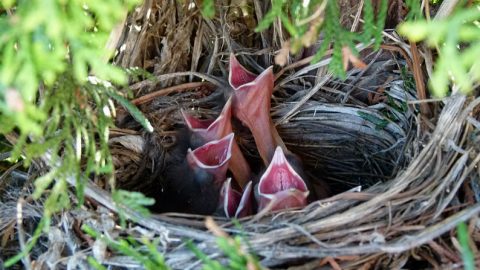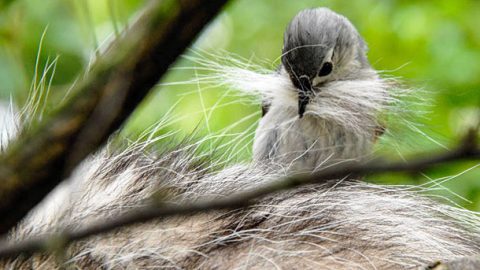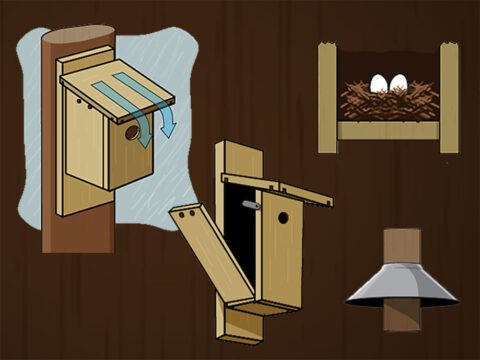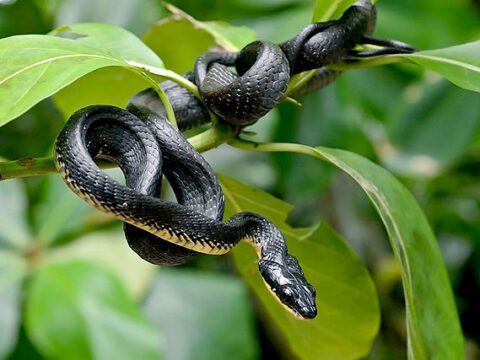Top 5 Tips for Finding Birds Nesting Near You
April 10, 2024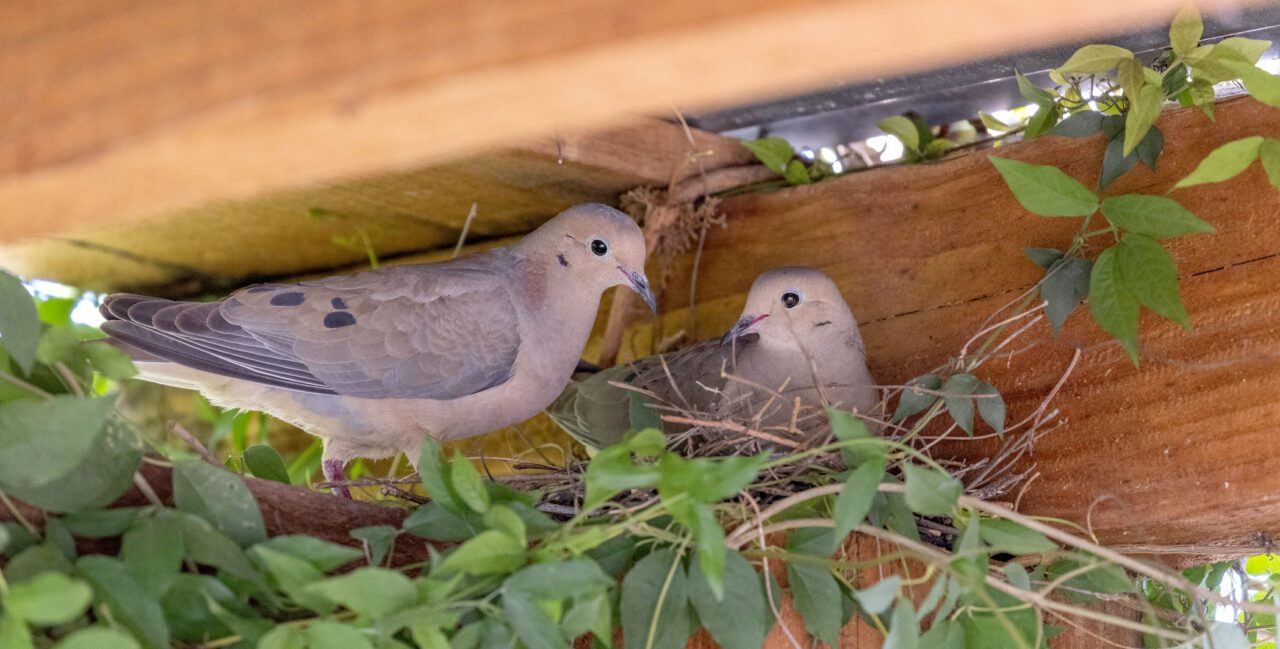
Originally published in the Spring 2016 issue of Living Bird; updated and expanded April 2024.
Finding a bird’s nest offers a rare chance to discreetly witness the intricacies of breeding bird biology. But birds have spent millions of years evolving ways to hide their nests from onlookers—so it takes skill to find these camouflaged gems.
But take heart—if you have birds around your house, and even just a little bit of habitat such as shrubs or trees, birds are probably nesting near you. And if you start to think like a nesting bird, you can tune in to their behavior. Start with these tips:
Watch for Birds Making a Mess
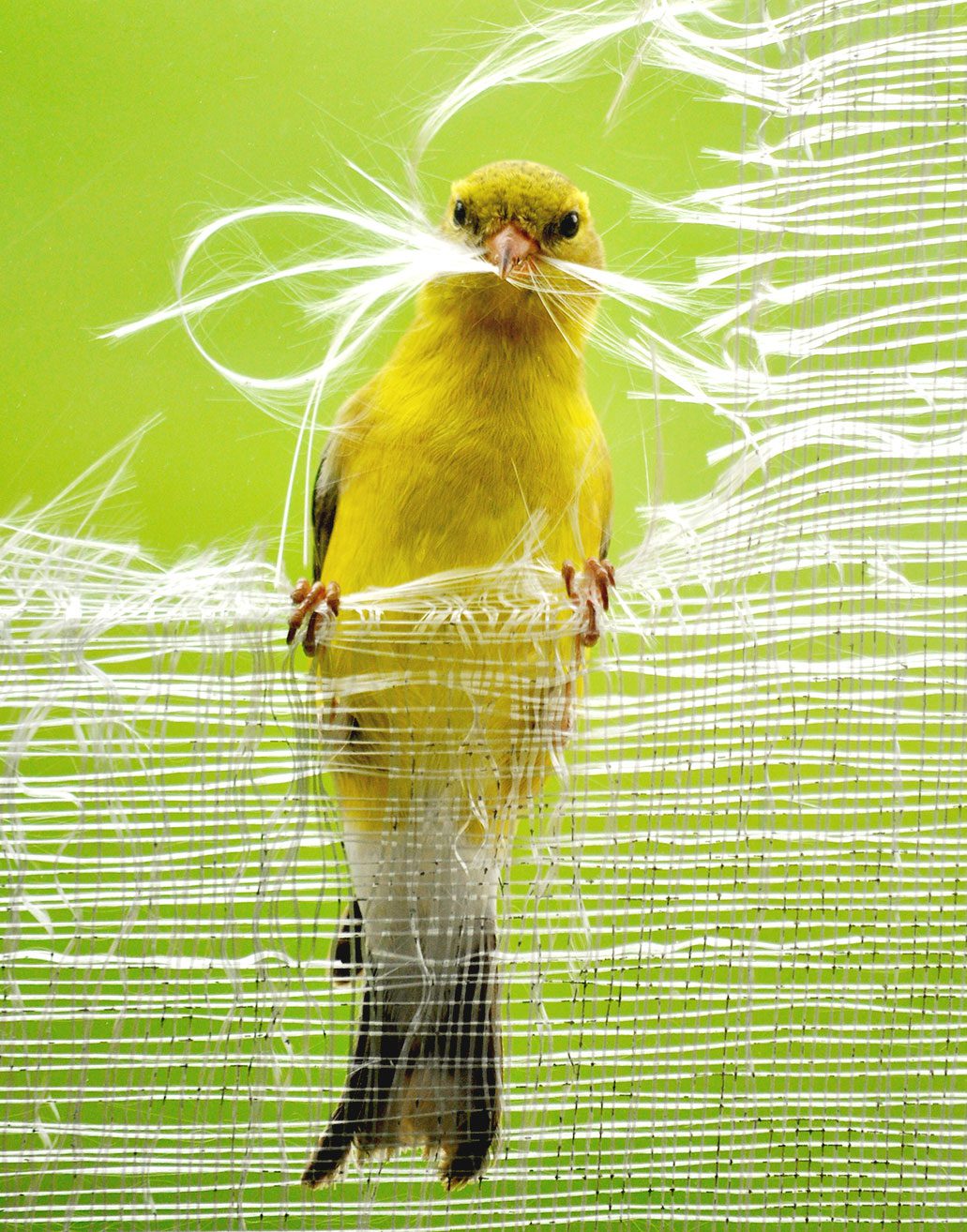
Most of the year, birds don’t tear at mouthfuls of grass, pull threads out of outdoor rugs, or peel the screens off windows. And they don’t eat any of these items. So if you see them making a mess, it’s a clue that they’re gathering nest materials. Watch where the bird goes once it has stuffed its beak—it may not go directly to its nest, but it’ll help you narrow down the location. Remember that it takes a lot of material to finish a nest, so if you miss where the bird went the first time, it’s likely to come back. Which leads us to:
Notice When Birds Get Fixated on a Random Spot
Birds often fly directly to places like feeders, fruiting trees, and running water. If you see them repeatedly heading somewhere else, without an obvious food source, they might be visiting a nest. They don’t always go directly to the nest (especially if they sense someone is watching) but may perch above or beside the area of their nest and keep watch over it. In spring you may even see birds trying out nest sites, seeing if their bodies fit in a gap between twigs, for example, before they’ve even started building. If a bird seems fixated on a particular spot, that’s a good area to come back to later and check for a nest.
Listen Out for Bird Chatter
Related Stories
We humans are conditioned to ignore background noise, so everyday sounds often get filtered out. But if you’re busy outside and something sounds different, pay attention. It could be the nasal begging sounds of nestlings clamoring to be fed, or the harsh scolding notes of an adult warning that you’re too close to its nest. Some birds, like grosbeaks, even call or sing from the nest itself. If you hear something that doesn’t fit the ordinary soundscape, focus your attention and follow the sound. It might just lead you to a nest.
If You See a Bird with Something in Its Bill, Watch Where It Goes
With a few exceptions like food-caching birds, most birds don’t carry items in their bills except during nesting season. And they usually eat their food as soon as they find it. So if you see a warbler snatch a caterpillar and then fly away before swallowing it, there’s a good chance it’s going back to feed a nestling.
A bird with a bill full of grasses, moss, plant down, or spiderweb is building a nest—watch where it goes. You might see a bird carrying an oblong, whitish bundle. From a distance it may look like a food item, but if the bird discreetly drops it, that’s a hint it’s a fecal sac. It’s part of the parent’s nest sanitation routine and it means there are nestlings nearby. In this case watch where the bird came from to find the nest.
Know What to Look For
If you see a bird showing any of these clues, brush up on its nesting behavior. Birds nest in a huge variety of places, but individual species usually make only one style of nest (such as a cavity, cup, or domed nest) and place their nests in a characteristic spot (on the ground, in vegetation, against a wall or overhang, etc.).
Knowing these habits will help you look specifically for your target bird’s nest. For instance, Tree Swallows, bluebirds, and chickadees will nest in birdhouses, but Bank Swallows, robins, and goldfinches won’t. Ovenbirds and Black-and-white Warblers make nests on the ground; MacGillivray’s Warblers and Clay-colored Sparrows nest low in shrubs; while orioles nest in the tops of trees. Even birds that nest in the same general locations make recognizable types of nests: gnatcatchers make thimble-shaped nests on top of branches, while vireos hang their cup nests between the fork of two branches. Get the intel on the species you’re tracking by checking our All About Birds species guide and this interactive guide from NestWatch.
When You Find a Nest, Keep Watch!
Once you’ve found a nest, keep an eye on it every few days to witness the nesting cycle unfold. A great way to do this is to report what you’re seeing to NestWatch, the Cornell Lab’s free participatory science project.
- Recording your observations via NestWatch will help scientists track nesting success. Check the NestWatch FAQ for more.
- Data entry is easy. Use the NestWatch app (available on app stores) or the website to record your observations.
- Keep birds and nests safe. Before starting out, you’ll review the NestWatch code of conduct and pass a short quiz. This step will get you all set with a safe monitoring protocol that doesn’t disturb birds.

All About Birds
is a free resource
Available for everyone,
funded by donors like you
American Kestrel by Blair Dudeck / Macaulay Library
